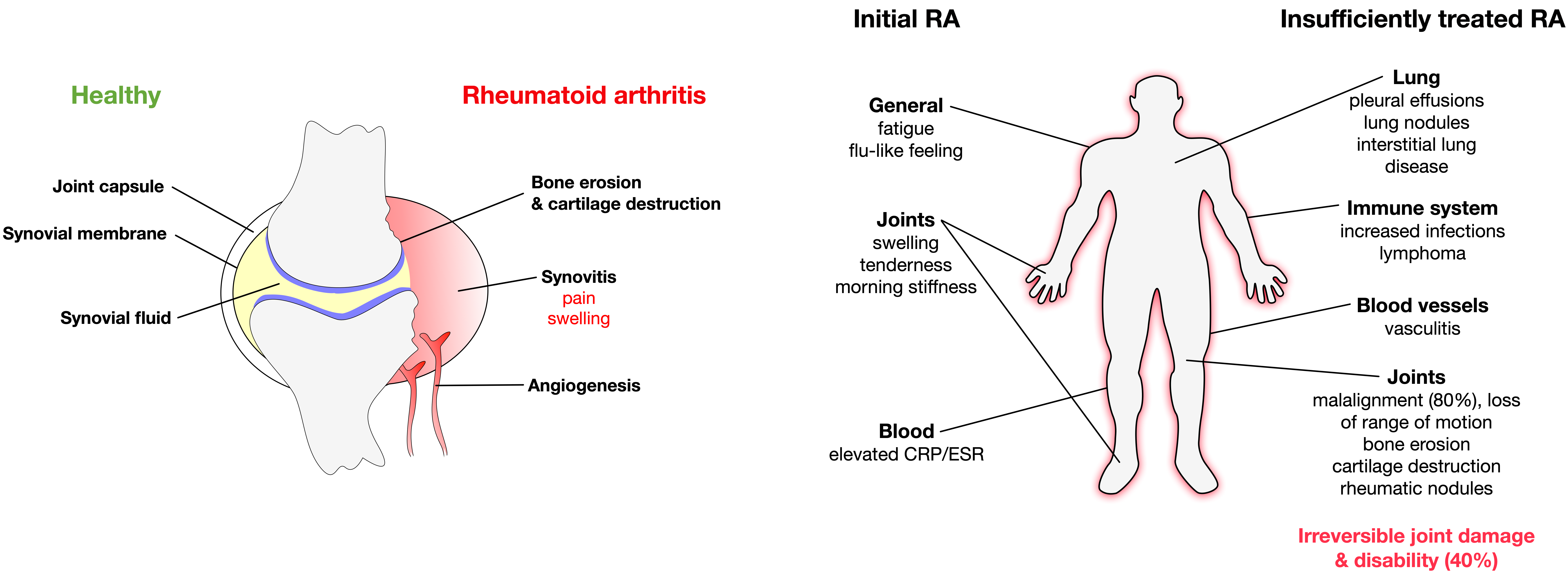Your browser does not fully support modern features. Please upgrade for a smoother experience.
Please note this is an old version of this entry, which may differ significantly from the current revision.
Subjects:
Biochemistry & Molecular Biology
In rheumatoid arthritis (RA) chronic autoimmune responses result in destruction of joints in affected patients.
- rheumatoid arthritis
- autoimmunity
- joint damage
Rheumatoid arthritis (RA) is a chronic autoimmune disease affecting the joints. It is characterized by a progressive symmetric inflammation of affected joints resulting in cartilage destruction, bone erosion, and disability [1]. While initially only a few joints are affected, in later stages many joints are affected and extraarticular symptoms are common (see below) [2].
With a prevalence ranging from 0.4% to 1.3% of the population depending on both sex (women are affected two to three times more often than men), age (frequency of new RA diagnoses peaks in the sixth decade of life), and studied patient collective (RA frequency increases from south to north and is higher in urban than rural areas) [1,2,3,4,5], RA is one of the most prevalent chronic inflammatory diseases [1].
Clinically, the symptoms of RA significantly differ between early stage RA and insufficiently treated later stages of the disease. Early stage RA is characterized by generalized disease symptoms such as fatigue, flu-like feeling, swollen and tender joints, and morning stiffness; and is paralleled by elevated levels of C-reactive protein (CRP) and an increased erythrocyte sedimentation rate (ESR) [6]. In contrast, insufficiently treated RA displays a complex clinical picture with the occurrence of serious systemic manifestations such as pleural effusions, lung nodules and interstitial lung disease, lymphomas, vasculitis in small or medium-sized arteries, keratoconjunctivitis, atherosclerosis, hematologic abnormalities (e.g., anemia, leukopenia, neutropenia, eosinophilia, thrombocytopenia, or thrombocytosis), joint malalignment, loss of range of motion, bone erosion, cartilage destruction, and rheumatic nodules (in detail reviewed in [1,2,7]). Taken together, these systemic manifestations caused by the chronic inflammatory state in RA patients result in an increased mortality.

Figure: Joint damage in rheumatoid arthritis and clinical symptoms of either initial or insufficiently treated rheumatoid arthritis
This entry is adapted from the peer-reviewed paper 10.3390/cells9040880
This entry is offline, you can click here to edit this entry!
